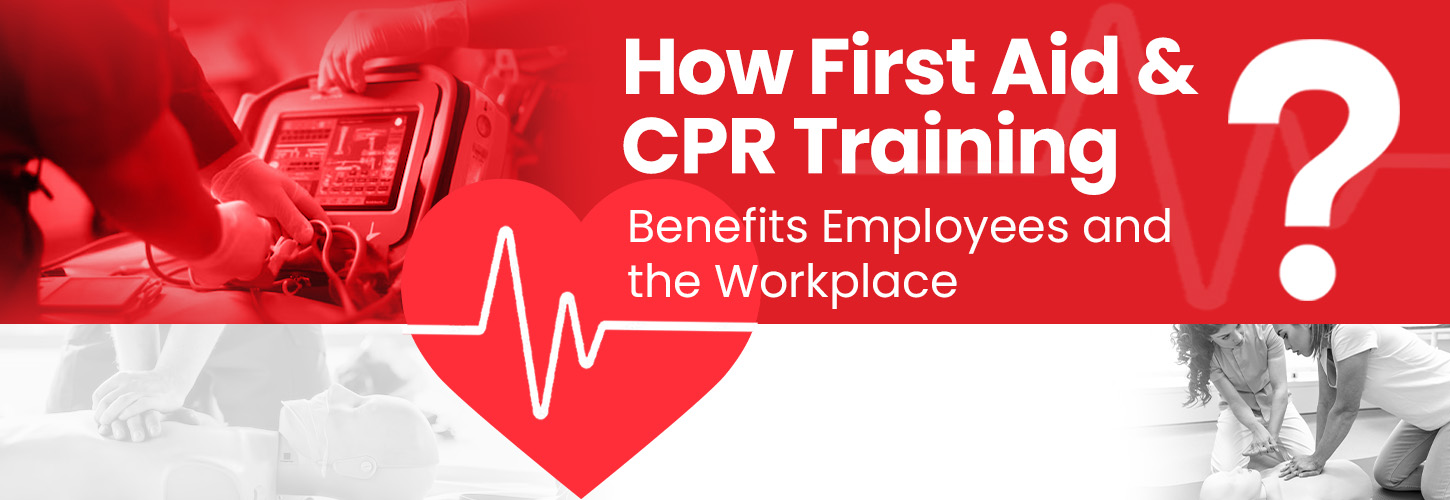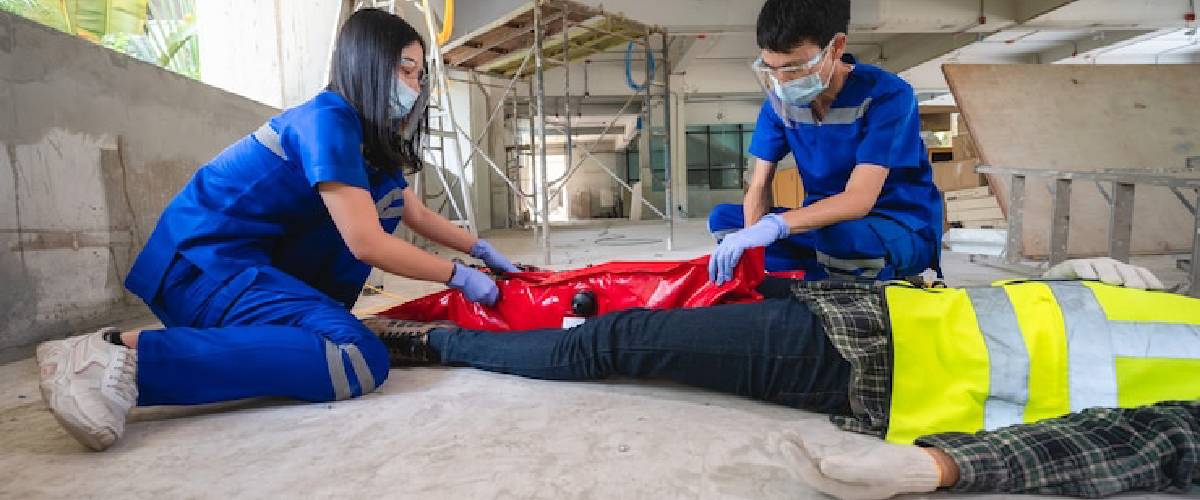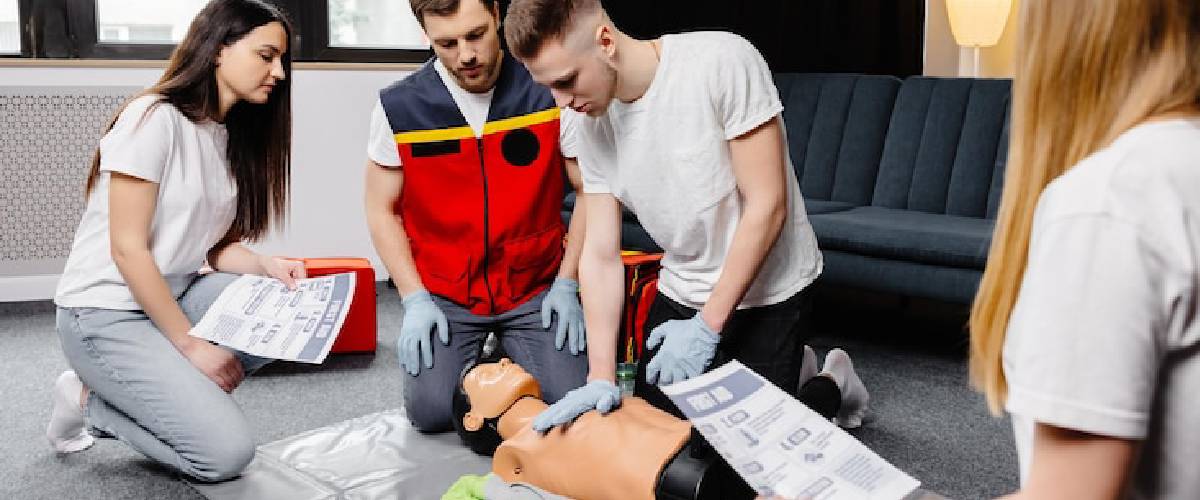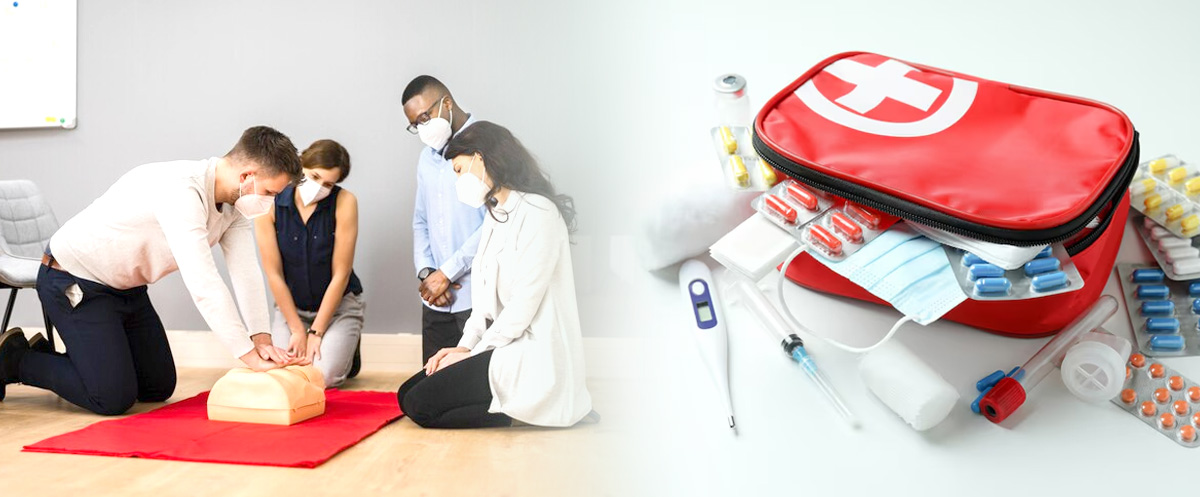As our modern world becomes more and more complex, it is imperative that we safeguard the health and happiness of our workforce. The first step toward achieving this goal is for our staff to acquire the essential skills of First Aid and CPR (Cardiopulmonary Resuscitation). These life-saving capabilities go beyond checking safety boxes to weave a network of security throughout our workplaces, leaving a distinct mark on our teams and our workplace. Join me as we delve into the profound significance of First Aid and CPR training , unravelling the manifold benefits they bring to all stakeholders involved.
What is first aid?
First aid is the initial care and assistance provided to a person who has been injured or suddenly taken ill. It is the immediate action taken to preserve life, alleviate suffering, and prevent the condition from worsening before professional medical help arrives. Basic First Aid can include a range of actions, such as wound dressing, splinting, and CPR.
Few Basic First Aid are
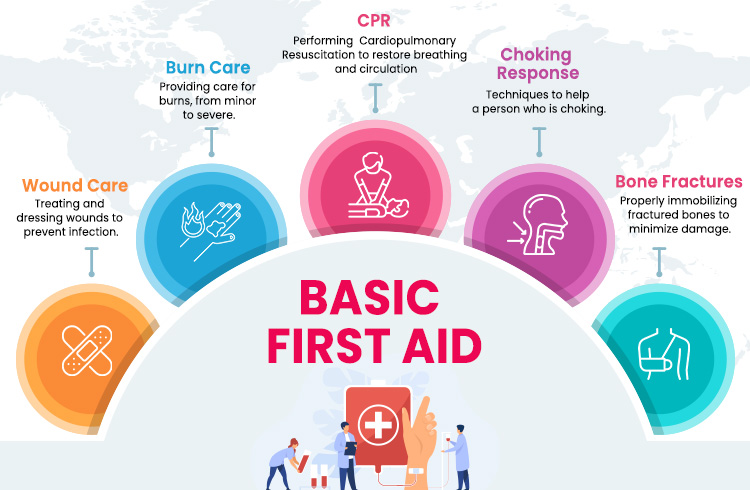
Statistical Data on Cardiac arrest
Annually, more than 356,000 cardiac arrests occur outside of hospitals in the United States. According to the Heart and Stroke Statistics report of the American Heart Association, cardiac arrest remains a significant public health issue. Nearly 90% of these cases are fatal. Many victims die because only 46% of them receive CPR in this situation.
“The goal of CPR is to keep oxygen flowing in and out of the lungs and oxygenated blood flowing throughout the body”
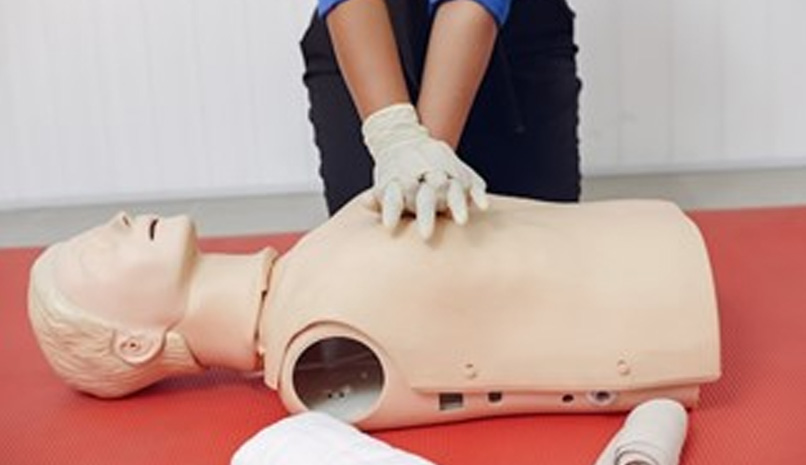
What is CPR in First aid?
CPR stands for Cardiopulmonary Resuscitation. The technique is used when someone’s heartbeat or breathing has stopped. Cardiopulmonary resuscitation involves maintaining blood flow and oxygenation to the body’s vital organs using chest compressions and rescue breaths. Performing CPR can significantly increase a person’s chances of survival during a cardiac arrest, which is why you must learn this skill.
The role of AED in first aid

An AED, or automated external defibrillator, is used to help those experiencing sudden cardiac arrest. It’s a sophisticated, yet easy-to-use, medical device that can analyze the heart’s rhythm and, if necessary, deliver an electrical shock, or defibrillation, to help the heart re-establish an effective rhythm.
Brain death can be prevented by CPR
When a person suffers from cardiac arrest, the heart stops pumping blood to the brain and other vital organs. A decrease in blood flow to the brain causes the victim to become unconscious. If there is insufficient blood flow to the brain, damage could occur within three minutes. Irreversible damage can occur without blood flow to the brain for nine minutes. As a result of CPR, blood can remain flowing and damage to the victim may be minimized.

What is the success rate of CPR?
According to the American Heart Association (AHA), the overall survival rate for out-hospital cardiac arrest is approximately 10%. However, CPR may improve survival rates if it is administered immediately. According to research, CPR can significantly increase the chances of survival for a person experiencing cardiac arrest. It is reported that CPR can increase survival rates to 40% or higher when performed promptly.
“Being trained in CPR means having the power to give someone a second chance at life.”
Top 6 Benefits of First Aid Training for employees
- Save Coworkers’ Lives: First aid training equips individuals with the skills to respond swiftly and effectively in emergencies, potentially saving the lives of coworkers in critical situations.
- Workplace Incidents Can Be Reduced: Trained employees are more likely to prevent accidents and respond promptly, reducing the frequency and severity of workplace incidents
- Improved Safety at Work: First aid knowledge fosters a culture of safety in the workplace, encouraging everyone to be vigilant and proactive in preventing accidents.
- The Proper Use of a First-Aid Kit: First aid training ensures that employees know how to use first-aid kits properly, making them valuable assets during emergencies.
- Speed Up the Recovery Process: Quick and proper first aid can minimize the extent of injuries and promote faster recovery, enabling employees to return to work sooner.
- Keep Employees Safe: Overall, first aid training contributes to a safer work environment, instilling confidence in employees and demonstrating a commitment to their well-being
Where to take first aid training?
The Green World Group is dedicated to helping, creating, and maintaining a safer environment through upskilling staff and ensuring compliance. By achieving the highest standards in learning and health and safety practices, we ensure the future of the company is completely protected.
The Green World Group is a source of excellence in First Aid and CPR education because it combines expertise, practicality, and international recognition. By choosing Green World Group, individuals are transformed into skilled responders and workplace safety standards are raised to new levels.


